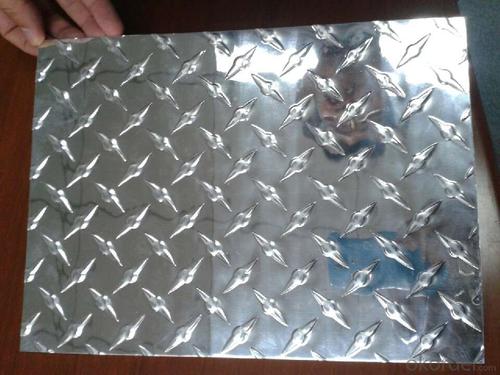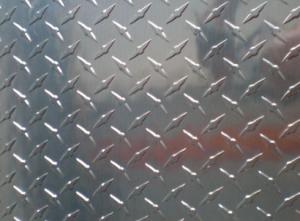Members Mark Aluminum Bake Sheets - Aluminum Drawn Slab with Best Price in Warehouse
- Loading Port:
- Qingdao
- Payment Terms:
- TT OR LC
- Min Order Qty:
- 2 m.t
- Supply Capability:
- 3000 m.t/month
OKorder Service Pledge
OKorder Financial Service
You Might Also Like
Specification
1.Structure of Product Description
aluminum sheet and checkered plates are all widely used in the field of construction field and decoration field, etc.
There are many different grades, such as: 1000 series, 2000 series, 3000 series, 5000 series, 8000 series,etc. The detailed grade are as follows: 1010, 1050,1060,1100, 7075,8011,2024, 3003, 3005, 3105, etc.
The temper is include H14, H22, H24, H44,H112,H114,etc.
2. Main features of the product
a.Competitive price
c. Shortest service.
3. Image.

4. Product detailed sizes:
1000mm*2000mm,500*500,2000*2000mm,1500mm*1500mm,1220mm*2440mm,1219*2438mm, etc.
5. FAQ:
What is the quality standard?
---Usually our standard is GB3880-2006 or others.
What is the width range?
---It is from 400mm to 6000mm, etc.
What is the MOQ for your products yet?
---Normally it is around 11 tons/each size.
How many tons did you export in one year
USA, ENGLISH, SINGAPORE, ETC.
What is your mainly products?
---Normally they are cold rolled and hot rolled and cold drawn aluminum sheet,mirror finish aluminium sheet, aluminum casting coil,caron steel sheet, galvanized steel sheet, color coated steel coils, etc.
- Q: Can aluminum sheet withstand heavy loads?
- Indeed, the durability of aluminum sheet is such that it can endure substantial loads. Renowned for its exceptional strength-to-weight ratio, aluminum proves to be an exceptional selection for endeavors necessitating both resilience and load-bearing capacities. Notably prevalent in sectors like aerospace, automotive, construction, and marine, aluminum sheets are frequently employed in scenarios involving weighty burdens. Moreover, the innate corrosion resistance of aluminum further fortifies its capacity to bear heavy loads for extensive durations. Nevertheless, it is crucial to take into account the precise grade and thickness of the aluminum sheet, as diverse alloys and thicknesses yield differing load capacities.
- Q: Are aluminum sheets suitable for decorative purposes?
- Aluminum sheets are perfect for decorative purposes. This material is incredibly versatile and can easily be shaped and designed, making it ideal for adding decoration. You can cut, bend, and mold aluminum sheets into various patterns, providing endless possibilities for creating decorative elements. Additionally, you can coat or paint the sheets in different colors and finishes to enhance their aesthetic appeal. Moreover, aluminum is both lightweight and durable, making it suitable for indoor and outdoor decorative use. It is resistant to corrosion, ensuring that your aluminum decorations will maintain their appearance and last for a considerable amount of time. Overall, aluminum sheets offer a plethora of design options and practical benefits, making them an outstanding choice for decorative purposes.
- Q: What is the typical weldability of aluminum sheets?
- Aluminum sheets are widely recognized for their exceptional weldability, thanks to their low melting point and excellent thermal conductivity. Various welding techniques, including TIG (tungsten inert gas), MIG (metal inert gas), and even spot welding, can easily be employed to join aluminum sheets. The weldability of these sheets can be further improved by utilizing specialized filler materials exclusively designed for aluminum welding. Nevertheless, it is crucial to acknowledge that the weldability may vary depending on factors such as the alloy composition, thickness, and surface condition of the aluminum sheet.
- Q: combines with oxygen with an atomic weight of 16, to form the compound aluminum oxide, how much oxygen would be required to react completely with 54g of aluminum?
- aluminum oxide is Al2O3 , or 2 part Al to 3 part O. 27 grams Al2 *2 / 54 grams Al available = 16 grams of O * 3 / X grams of O solve for X: X = 48 grams of oxygen needed next guy is right....the formula for aluminum oxide is Al2O3..sorry...I readjusted the formula above to show the change
- Q: Okay guys i need to rapir a crack on an aluminum pipe , would durafix do the job ?? If so where can i get this durafix ? at my local home depot ?
- Durafix Aluminum
- Q: What oil does the aluminum plate stretch with?
- There are professional tensile oil, you can ask to pull the rice cooker liner manufacturers know, if not a lot of production, you can use peanut oil first try, the effect barely enough!
- Q: Are aluminum sheets suitable for electronic components?
- Yes, aluminum sheets are suitable for electronic components. Aluminum is a lightweight and durable metal that has excellent electrical conductivity. It is commonly used in the construction of electronic housings, heat sinks, and circuit boards. Aluminum sheets can be easily machined, formed, and welded, making them versatile for various electronic applications. Additionally, aluminum has good thermal conductivity, allowing it to dissipate heat effectively, which is crucial for preventing overheating in electronic devices.
- Q: What are the different surface treatments available for aluminum sheets?
- There are several different surface treatments available for aluminum sheets, each with its own unique properties and benefits. Some of the most common surface treatments for aluminum sheets include anodizing, painting, powder coating, and laminating. Anodizing is a popular surface treatment method that involves immersing the aluminum sheet in an electrolyte solution and passing an electric current through it. This creates an oxide layer on the surface of the aluminum, which enhances its corrosion resistance, improves durability, and can also provide decorative finishes in a variety of colors. Painting is another common surface treatment option for aluminum sheets. It involves applying a layer of paint onto the surface of the sheet, which not only enhances its aesthetics but also provides protection against corrosion and environmental elements. Painting allows for a wide range of colors and finishes, making it a versatile option for various applications. Powder coating is a technique where a dry powder is electrostatically applied to the aluminum sheet and then cured under heat, creating a durable and attractive finish. Powder coating offers excellent resistance to weathering, chemicals, and UV rays, making it suitable for outdoor applications. It also provides a wide range of color options and can be applied to achieve various textures and finishes. Laminating is a surface treatment process that involves bonding a thin layer of a different material, such as plastic or wood, onto the aluminum sheet. This not only enhances the aesthetics but also provides additional properties like scratch resistance, increased strength, and insulation. Laminating can offer a wide variety of finishes and textures, allowing for customization and versatility in design. These are just a few examples of the various surface treatments available for aluminum sheets. The choice of treatment depends on the specific requirements of the application, desired aesthetics, durability, and environmental factors. Consulting with a professional or supplier can help determine the most suitable surface treatment option for a specific project or application.
- Q: Are aluminum sheets conductive?
- Indeed, aluminum sheets possess conductivity. Being a metal, aluminum exhibits exceptional electrical conductivity. Consequently, aluminum sheets facilitate the smooth passage of electricity, rendering them suitable for an array of applications that necessitate conductivity, including electrical wiring, power transmission lines, and electronic devices.
- Q: project on aluminum and i cant think of a good/funny slogan for it! HELP! i have already seen the other possibilities on google, try to be unique, and creative! but if you cant just answer the flipping question PLZ!
- Once worth more than Gold Aluminum: It's the flipping answer If government could read your thoughts, you can always wear aluminum head gear. Aluminum - The super wealthy recycle it. Lucky Element 13 - Aluminum Say no to radiation from machines; Say yes to Aluminum Nothing Says Christmas like Shinny Metallic Reynolds Gift Wrapping Aluminum - it's worth more money than slogans because I get those for free over the Internet
Send your message to us
Members Mark Aluminum Bake Sheets - Aluminum Drawn Slab with Best Price in Warehouse
- Loading Port:
- Qingdao
- Payment Terms:
- TT OR LC
- Min Order Qty:
- 2 m.t
- Supply Capability:
- 3000 m.t/month
OKorder Service Pledge
OKorder Financial Service
Similar products
Hot products
Hot Searches
Related keywords




























